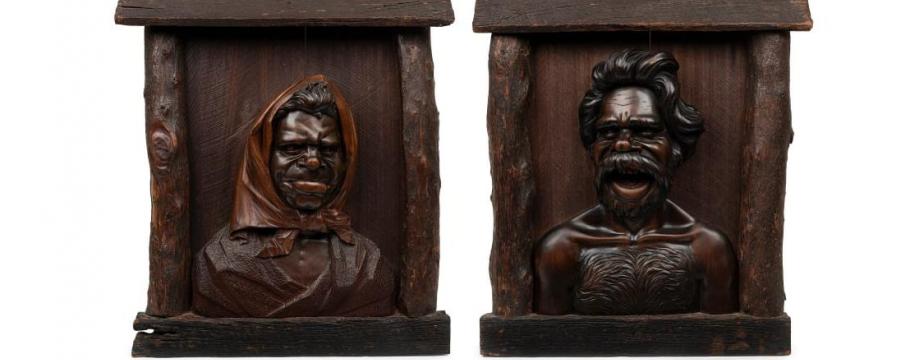
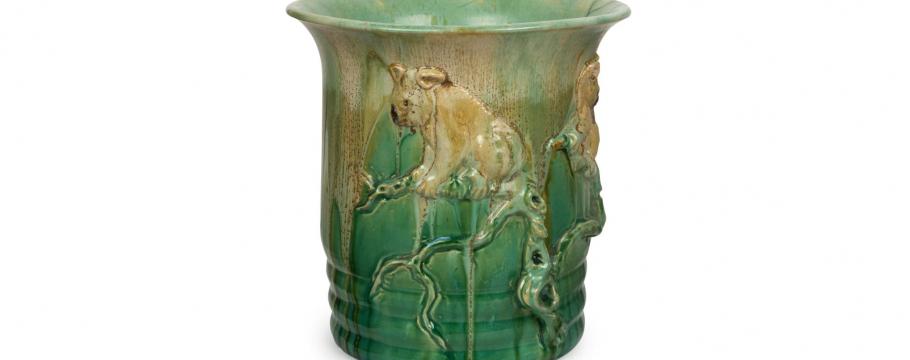
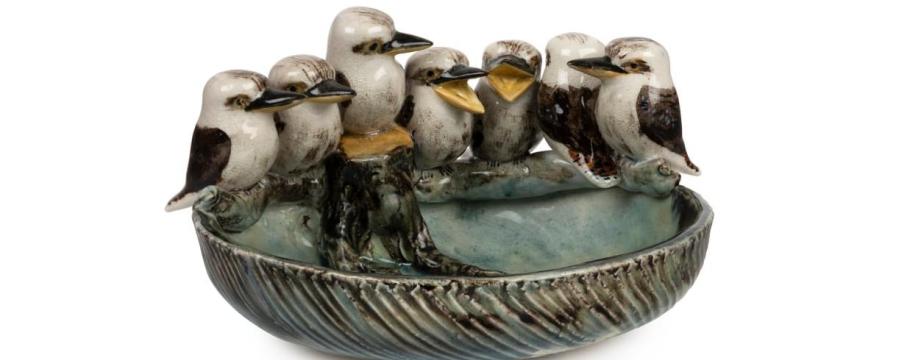

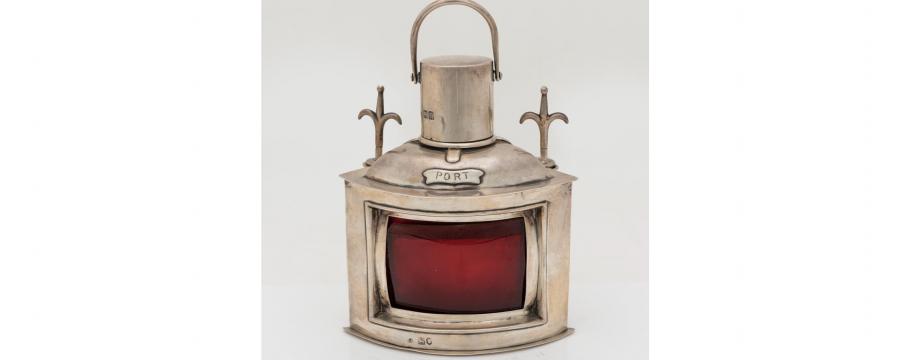
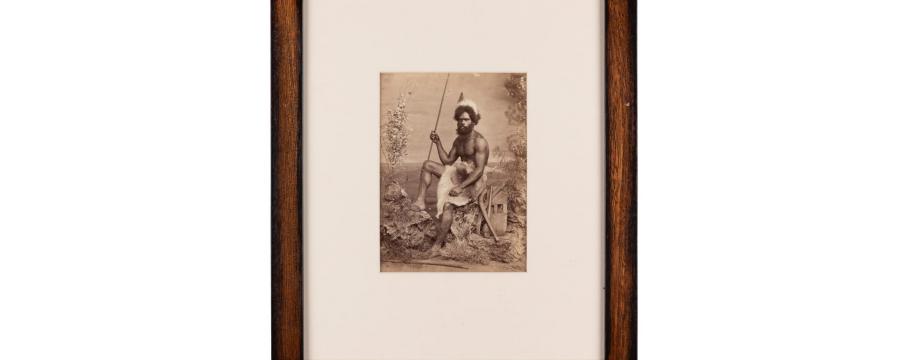
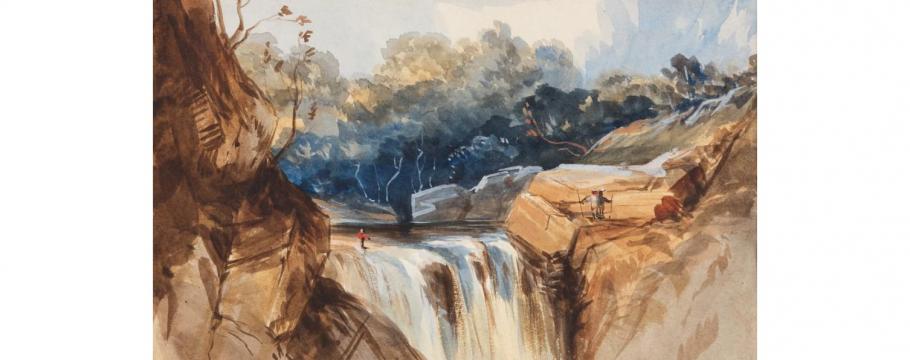
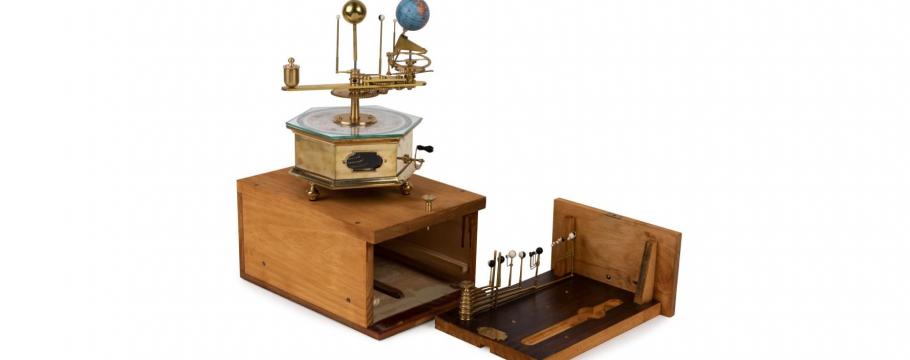
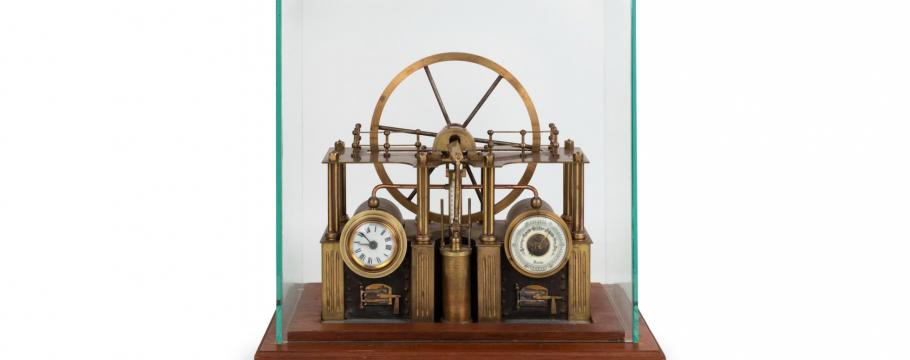
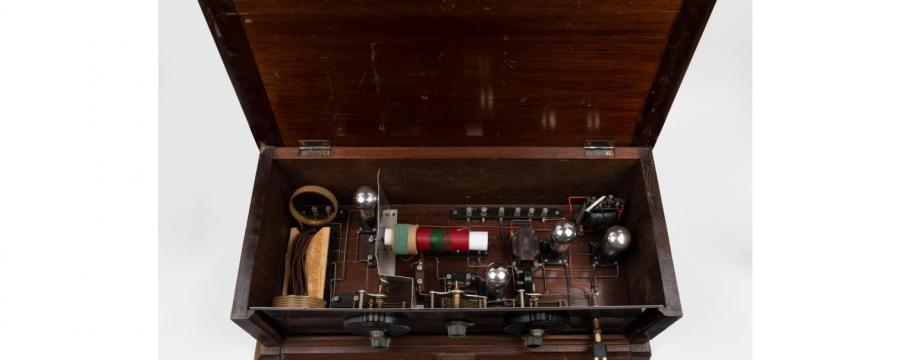
Great finds in Australian, maritime and natural history auction
Author: Richard Brewster | Posted: 22nd August, 2022
A pair of carved timber portrait panels featuring an Aboriginal man and woman with headscarf dated 1918 (lot 55) by famous Australian sculptor Robert Prenzel (1866-1941) is among the highlights of Gibson’s Auctions two-day Australian, Maritime and Natural History sale, live from 12pm Sunday August 28 and continuing the next day as a timed online auction closing from 10am, at 885-889 High Street, Armadale.
Prenzel was born in Prussia, training as a woodcarver before working his way through Europe and arriving in Melbourne on November 24, 1888.
He worked first as a ship builder and modelling terracotta architectural ornaments before going into partnership with Johann Treede and working on such projects as the ceiling and walls of St Patrick’s Cathedral.
Carving the flora and fauna of Australia onto native timbers became his trademark and he is best remembered for his furniture and carvings of Australian motifs.
The auction is an interesting mix of Australian-related historical items, silver, pottery, decorative arts, paintings, maritime pieces and natural history specimens.
A typical pottery attraction is a Remued Pottery 1940s rare glazed earthenware koala vase (lot 14) while a Grace Seccombe (1880-1956) glazed earthenware kookaburra bough dish (lot 23) is not to be ignored.
Amongst several sterling silver offerings is an Australian cricket trophy from the 1884-5 season made by H. Young and Co (lot 33) for the Melbourne Sports Depot Junior Cricket Club.
Another is a 1908 marine themed table cigar lighter from Samuel Jacob of London (lot 38). The lighter is in the form of a port light complete with red glass window and hinged lighter top.
Lot 51 entitled Seated Aboriginal with Spear is one of several albumen prints on Australian indigenous people by John William Lindt (1845-1926). Born in Germany, Lindt turned his back on a supposedly illustrious future to satisfy his lust for adventure. At 17, he ran away and boarded a Danish vessel bound for Australia.
The ship visited New Guinea en route and, when he saw the local natives, sparked what became Lindt’s lifetime interest in anthropology – something he was able to pursue more thoroughly once he reached New South Wales and teamed up with a local photographer, from where he could observe the customs and traditions of several Aboriginal peoples.
A leather folio of 17 watercolour paintings of the Blue Mountains, Mount Kembla-Ilawarra, Wollongong, Illawarra Lake, and Sofala on the Turon, Turon River – with lot 120 showing Views of N.S.W. 1842-1853 – is another strong visual attraction.
Among the inventions is a limited edition orrery (lot 66) by Hungarian refugee George Gyori, who aged 19 arrived in Australia in 1957 and trained as an engineer. It is part of a collection of clocks, watches and scientific instruments he amassed or made over many years.
A further attraction is a rare and unusual Industrial Revolution time piece with both a barometer and thermometer (lot 78) – a finely working engineered brass model based on the James Watt steam engine patented in 1769.
An Australian made “Allwave” radio (lot 75) by Percy Bradley of Pascoe Vale, housed in a Bakelite faced wooden box with a 1932 receiving licence, is another fascinating and unusual item bound to interest auction goers.





